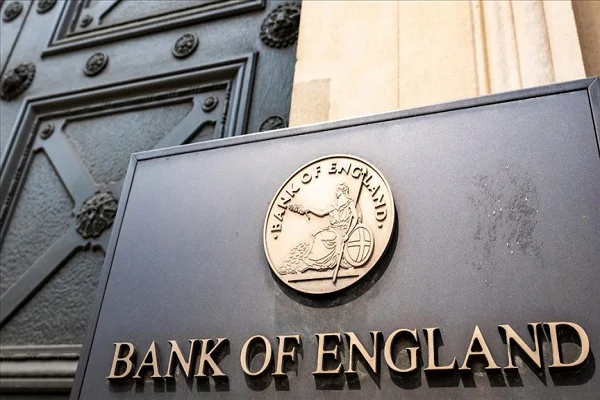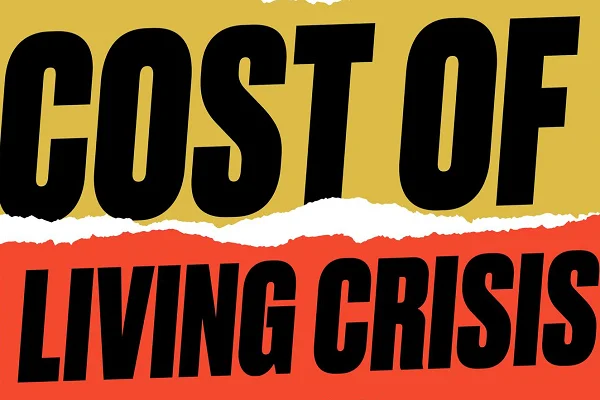News
Seven out of Ten First Time Buyers Delay Getting on to the Property Ladder as the Cost of Living Continues to Rise
Seventy percent of first-time buyers are holding back on buying their first property as the cost of living continues to rise, according to a report released by the Nationwide Building Society.
The research shows that people who were planning to get their foot onto the property ladder in the next 12 to 24 months have made the decision to hold off, chiefly due to the difficulty of saving up the deposit. With the cost of living spiralling, rocketing fuel prices, energy cap increases, and the war in Ukraine, British household monthly outgoings have increased to the point where many potential buyers have no disposable income and therefore are unable to save.
The expected time that first-time buyers were expected to delay was averaged out at two years, according to the report. Broken down, the figures showed that 57% would delay for two years, while 77% would delay for up to three years. Nearly 20% stated that they would now not buy for over three years in order to be able to raise the funds needed.
The report showed that there were variations in the figures according to region, with 23% in the South West and 28% in Wales saying they would wait more than three years.
The survey involved 2,051 participants, all first-time buyers looking to purchase within the next five years. The biggest hurdle they identified was the inability to raise the deposit.
With the typical deposit at 10%, it’s no wonder that first-time buyers are struggling, as this equates to around 60% of the average gross annual income.
As far as the opinion on the most difficult aspect of homeownership goes, 28% felt it was coming up with the deposit, 14% thought that it was the ability to borrow a sufficient amount for what they wanted to buy, and 12% considered keeping up the monthly payments to be the most concerning issue.
Nine out of ten people surveyed felt that the current cost of living and the predicted further increases in interest rates and energy prices were the main reasons for not being able to raise funds. 50% have reduced the amount they are saving, while a further 38% are using the savings they have to help pay their monthly bills.
One of the questions put to the participants was whether they felt 2022 was a good time to purchase their first property, resulting in an almost equal but split response, with 51% saying no and 49% saying yes.
Another problem that has arisen for first-time buyers is the ever-increasing property prices, which have priced many potential buyers out of the market. Coupled with rising rental costs, 43% of tenants said saving for a deposit was just impossible, according to the report.
69% are considering looking at areas with more competitive housing prices in order to be able to buy a larger property. Willingness to move away from London and its typically high prices was recorded at 79%.
The report showed that most first-time buyers expected to be on the property ladder at around 27 years old, although 30% felt that buying before 30 years old was highly unlikely due to financial pressures.
Due to all of these limitations, many first-time buyers are considering the option of buying with someone else in order to realistically have a chance of making their first home purchase.
Bank of England Announces Yet Another Hike in Interest Rates as Cost of Living Crisis Escalates
On Thursday this week (5 May), the Bank of England is expected to once again increase interest rates as the cost of living and inflation rates spiral out of control. The Bank of England is doing this in an attempt to stabilise the constantly increasing inflation rate. This rise will see a thirteen-year high in interest rates.
Rates are predicted to rise from the current rate of 0.75% to 1%, the highest seen since 2009. Due to the ongoing war in Ukraine, inflation is expected to continue to rocket with the rise in the cost of living, making it very difficult for many to deal with crippling financial responsibilities.
Members of the MPC (Monetary Policy Committee) have previously raised interest rates during the last three meetings in order to try and get inflation under control. Inflation currently sits at a 30-year high with a 7% inflation rate by the end of March, a far cry from the 2% target set by the Bank of England.
Things are expected to go from bad to worse with the predicted energy price cap revision due to be increased again later in the year. There is also a warning that inflation may, at the same time, rise to a worrying 9%, with some experts believing that it could actually reach double figures.
By raising interest rates when prices are increasing faster than wages, the Bank of England hopes that people are encouraged to save as opposed to borrowing. This tends to slow down the economy and, in turn, help bring down inflation rates.
With businesses and households being forced to tighten up on their finances, the growth of the UK economy is likely to suffer with the expectation that the Bank of England will further trim the economy on Thursday, according to the experts.
Investec economists said: “The UK is in the grip of the cost-of-living crisis. Coupled with tax rises, this leaves a rocky road ahead.”
The expectation from the experts at Investec is that we will be able to avoid a full-on recession. This is primarily due to many being able to save during the COVID-19 pandemic, but spiralling inflation and slow economic growth “leave the MPC in a bind”.
Investec has stated that they are predicting another hike in August from 1% to 1.25% but expect a pause after “assessing how big the effect of the real income squeeze on activity turns out”. More increases in 2023 are a very real possibility, with two more rises expected to be implemented.
February saw a sharp decrease in growth as the cost of living crisis really took hold. Official data released revealed that in February there was growth of just 0.1%, down from 0.8% seen the month before.
The Bank of England stated that it thought this year’s first quarter growth would sit at around 0.75%, which is higher than the expected GDP (gross domestic product), which was expected to remain flat.
Many experts, however, are predicting a flatlining of the GDP in quarter 2, as escalating prices further decrease consumer confidence.
Should I Port My Mortgage, and What are the Alternatives?
Taking your mortgage with you when you move is called porting, but is it a good idea, and will your lender let you do this?
The choice to purchase a mortgage does not always lie with the homeowner, and some lenders will not even consider allowing you to do this.
We look at the process of obtaining a mortgage and whether it is the right path for you when you move home.
Porting a mortgage explained
Although not many people know this, there are a great many mortgages that are ‘portable’, in other words, can be transferred from your current property to a new one. However, even though on paper your loan may be portable, you may still be blocked from doing this.
Although this may be an attractive feature of a mortgage, it does not guarantee that you will actually get permission from your lender.
A few reasons why porting may not be advisable include the following:
- You are required to reapply for your mortgage and risk being rejected. When porting, you will need to go through the application process all over again, and there will be no guarantee of acceptance. Your personal circumstances will likely have changed, and this can affect your chances. Alternatively, the lender’s application criteria may have been altered to reflect the current market.
- You may not be able to borrow the amount you wish. If you are planning on moving to a bigger or more expensive property, you may be turned down on the basis of affordability criteria.
- You may need to take out two loans. If you are moving to a more expensive home, you may need a second loan to cover any additional costs. The lender may require you to put any additional funds through a separate mortgage product, which will undeniably result in additional arrangement fees and legal costs.
- You may end up with a high-interest rate. If your lender does allow you to port and approve a larger amount, you may end up agreeing to a higher interest rate as you will be limiting yourself to a single lender and thereby not taking into account competitive interest rates available from other lenders.
What can you do if you can’t port?
The alternative to porting, if your lender does not allow this, is to find a new mortgage. Leaving your current mortgage early can result in charges and fees, so it is best to weigh up all your options before making any commitments.
- Early repayment charge: If you are still in the introductory offer stage of your home loan, you may be subject to charges should you change your mortgage. There are unlikely to be any charges levied should you be past this initial deal period.
- Exit fee: When a mortgage is paid off, you typically need to pay an exit fee. Normally, this is just a few hundred pounds, but you may have paid it at the onset of your mortgage, so make sure you check first.
- Fees for new mortgage: You will be required to pay arrangement fees and legal fees for any new mortgage you take out following your exit from a previous home loan.
Should you port if other deals look better?
It’s all about the calculation in this circumstance. The numbers don’t lie, and it may very well be the case that you can find a much better deal with lower interest rates by shopping around. There may be exit and early repayment fees, so make sure to account for this.
Legal Advice Has Become Mandatory for All Equity Release Customers
This month, the Equity Release Council made it mandatory for all UK citizens looking to release equity to have at least one face-to-face visit with a solicitor before committing to any plan.
This marks a return to pre-pandemic criteria following a temporary change in rules by the Equity Release Council in April 2020. The changes were made so that customers could still access equity release products when lockdowns were the norm and face-to-face meetings were not possible due to social distancing rules.
New equity release customers have been required to take out independent legal advice since the first industry standards were formulated back in 1991, with the legal requirement of a face-to-face meeting added later in 2013.
With many companies across all industries forced to rethink their working environment during the pandemic, a temporary change to the face-to-face requirement was made, with the application process being a mix of telephone calls, documented video, and written advice.
This resulted in an increase in the amount of interaction between the client and the solicitor so that extra checks could establish the customer’s identity and whether they were of sound mind and had the mental capacity to enter into a legal contract, as well as the agreement to proceed by all parties with no coercion or duress.
Cases that were already in progress prior to the recent reversal of requirements must now reach completion by the end of July this year. All new cases as of April 19 will now have the legal requirement for a face-to-face meeting with a legal advisor in order to be accepted for equity finance. Despite the changes only coming this month, the first quarter of 2022 shows that most equity release customers did seek face-to-face legal advice.
Chair of the Equity Release Council, David Burrowes, commented: “The temporary amendment to our requirement for face-to-face legal advice served its purpose well by protecting customers and maintaining their access to vital funds in trying circumstances.
“The Council’s unique ability to bring together firms from across the market helped to identify a practical solution whereby customers were not cut off from money tied up in their homes, which in some cases was key to accessing care services when they most needed them.
“While restrictions have ebbed and flowed during the pandemic, we are hopeful the worst is now behind us. The time is right to return to the default of in-person legal advice while learning lessons about how technology can best support the overall process and customer experience.”
CEO of Equilaw and non-executive director of the Council, Claire Barker, added: “Independent legal advice is one of the unique distinguishing factors that sets equity release apart from other retail financial services when it comes to customer safeguards and protections.
“Legal firms were able to preserve this important link in the chain throughout the pandemic, despite the adverse operating conditions. Industry collaboration on risk management and sharing of best practices meant we could uphold standards of consumer protection and demonstrate this to lenders and funding partners.
“While face-to-face legal advice remains the gold standard, many uses of technology during the pandemic can continue to benefit customers in the long run. A good example of this is financial advisers using video conferencing to bring family members into conversations about releasing equity or solicitors using online case trackers to liaise with clients.”
Searches for Rental Properties up 76%, Zoopla Reports
Slowly but surely, some semblance of normality is creeping back into everyday life. Homeworking and hybrid working models look set to remain the norm for some, but millions are nonetheless finding themselves being summoned back to the office.
The mass exodus from major towns and cities has ended and is beginning to show signs of a gradual reversal. According to Zoopla, this return to conventional office life is one of the key drivers behind a huge spike in the number of people currently searching for rental properties. Coupled with skyrocketing property prices, effectively pricing millions out of the market, more people are setting their sights on private rents.
Specifically, private rental property searches were 76% higher in 2022 to date than during the same period of the last three years, Zoopla reports. More homes are being placed on the private lettings market than at this time last year, but not nearly at a pace sufficient to meet the demands of prospective tenants.
It has become the norm for landlords to have multiple parties effectively ‘bidding’ on their private rental properties at the same time, driving average monthly rents to record highs in many areas of the country.
Younger tenants leaving parents’ homes
Throughout the pandemic, millions of younger tenants made the decision to terminate their agreements and move back in with their parents. As homework negated the need to continue paying elevated monthly rents in major towns and cities, the sensible option was to make huge savings by relocating.
Today, with almost all coronavirus restrictions having been removed, workers from across the country are once again being beckoned back to their original workplaces. Those who moved back in with their parents are frantically looking to secure affordable housing in major towns and cities, as are those who gained employment remotely during the pandemic.
For the overwhelming majority of these individuals, purchasing a property outright is not a realistic option.
In addition, those who are able to secure quality rental homes at affordable prices are, in some cases, signing longer agreements in order to mitigate the risk of being forced to vacate their homes in the near future.
“We’re hearing from agents and landlords that tenants are signing longer leases, which has prevented some of the stock that would normally come back onto the market,” Tim Bannister, Rightmove’s director of property data, said in a statement.
“When it comes to demand, we’re still seeing the effects of the pandemic, whereby tenants are balancing what they need from a home and how close they need to live to work with where they can afford.”
Along with rising rent costs, private tenants are also feeling the squeeze of skyrocketing energy bills and record-high inflation.
High Earners at Risk of Becoming Mortgage Prisoners
Many high-earners with large mortgage obligations are finding themselves unable to refinance as lenders tighten lending criteria following the recent tax increases. Many homeowners who bought during the pandemic, when the market was booming, may find themselves trapped and unable to move if they have gone beyond their means to buy the property.
With lenders taking the recent cost of living increases into account when considering refinancing loans, the likelihood of being approved has massively decreased. Lenders are looking at high earners, especially those who are paid by dividends and are considering the increased tax on dividends when looking at affordability.
This month, Santander announced that they will be adjusting their lending criteria to include the recent energy, fuel, inflation, and tax hikes.
Lewis Shaw, of Shaw Financial Services, explained: ‘With lenders now really starting to tighten their belts, we could easily see a scenario where over-leveraged borrowers with big mortgages may struggle to remortgage as lenders’ affordability models are adjusted in line with tax rises and the cost of living crisis.’
He added, ‘Business owners who pay themselves in dividends will be at particular risk, being squeezed from every direction.’
‘Not only do they have to cope with the employer’s National Insurance increase, corporation tax hikes, and higher dividend tax rates, hitting their own disposable income, but they also have to face down calls from staff for wage increases. It’s a brutal balancing act.’
Graham Cox, of the Self Employed Mortgage Hub, said: ‘Many company directors have paid top dollar for large, overpriced properties during the past two years.
‘The Stamp Duty holiday, exceptionally low mortgage rates, housing stock shortages, and the ‘race for space’ have driven up house prices to absurd heights.
‘But, with an additional 1.25 per cent on dividend tax in the 2022–23 tax year, the National Insurance hike, huge cost of living increases, and steadily increasing mortgage rates, lenders’ affordability criteria are already tightening.
‘When the time comes to remortgage, it’s possible overstretched business owners could be left stranded on unaffordable standard variable rates. It depends on whether their existing lender is willing to provide a new deal.
‘Nonetheless, if house prices go into sharp reverse, which is a distinct possibility, we’re looking at negative equity, repossessions, and a whole world of pain.’
Santander stated that the new increase in national insurance, increased household outgoings, and dividend tax will be factored into the affordability test.
Graham Sellar, of Santander, said: ‘We adjust our mortgage affordability calculation on an annual basis, using updated household spending data from the ONS and taking account of other factors, including the Bank of England base rate alongside national insurance and tax threshold changes.
‘We have adjusted affordability on this basis every year for the last ten years.’
This comes following the Chancellor of the Exchequer’s announcement of a 1.25% increase in dividend tax and national insurance contributions (from 12% to 13.25%). Tax on dividends has increased by 1.25%, so for basic, higher, and additional tax earners, it becomes 8.75%, 33.75%, and 39.35%, respectively.
Adding to the misery, energy price caps have risen from £693 to £1971 at the start of the month.
Imran Hussain, of Harmony Financial Services, said: ‘With living costs spiralling out of control and NI and dividend income tax rates rising, it should not come as a surprise that lenders will have to adjust how much they will allow people to borrow.
‘They have a responsibility to ensure all borrowing is affordable. Some have done so already, while others are doing so.’
Cost of Living Crisis: Homeowners Stretch Mortgages to 35 Years
During the pandemic, the government’s incentive to remove the stamp duty levy on all properties up to £500,000 sparked a rush for buyers to purchase larger and more expensive properties by taking out home loans for extended periods. There is a prediction from experts that the cost of living increases we are currently experiencing could be the result of a surge in 35-year-plus mortgages.
The stamp duty tax relief meant that buyers could save up to £15,000 when buying a new home before it was tapered down in June 2021 and finally stopped in September 2021. Data reveals that the number of 35-year-plus mortgages increased significantly towards the end of both of these periods.
A typical mortgage term is 25 years, which is the time period over which a home loan is paid. Figures released by Quilter, a wealth management firm, show that in June 2021, there were 35,046 mortgages sold with payment terms of 35 years or more. This equates to an increase of 209% when compared to the previous June.
September 2021 showed a growth of 73% in longer-term mortgages, rising from 16,066 in September 2020 to 28,112 the following year.
Data shows that buyers have been stretching themselves financially in order to buy at a time when house price hikes were at a high, with the average home cost increasing by 13.2% in the year to June 2021.
The reason most will have opted for a 35-year-plus mortgage was to meet their monthly repayments on properties that would be too expensive over a shorter term. By spreading the loan, monthly payments are reduced.
David Hollingworth, associate director at broker L&C Mortgages, says that the longer-term mortgage has been a growing trend in recent years.
‘We do know that there has been an increase in borrowers structuring their mortgage over longer terms for a number of years now, often driven by high house prices,’ he says.
‘Taking a longer-term will help give buyers a bit more flexibility in their monthly budgeting by reducing the monthly payments on a repayment mortgage.
‘That helps with affordability and can be a comfort to first-time buyers taking their first step on the ladder who may want some breathing space in the early stages.’
But will the ever-increasing cost of living make longer-term mortgages more common than not? With increased monthly outgoings and house price increases (11% increase to the end of March), it is expected that more buyers will take this option.
Mortgage interest rates are also on the rise, leading to many homeowners looking for ways to decrease their monthly mortgage burden by remortgaging their property using a longer-term mortgage. Longer-term home loans generally allow the buyer to lend more money so that they can also buy a bigger or better property.
Martijn van der Heijden, chief financial officer at mortgage broker and lender Hibito, said: ‘For some people, the impact of inflation will take a big toll on their monthly outgoings.
‘We’ve had inquiries from customers wanting to remortgage to change their term from 20 years remaining to 30 years remaining to reduce their monthly repayment amount.
‘With some incurring national insurance tax rises, alongside frozen income tax thresholds and frozen student loan repayment thresholds, we could see more customers looking to extend their mortgage terms to make their monthly repayments lower.’
There are some risks associated with taking out a long-term loan. You will need to carefully consider the interest rates being offered.
‘Other than the obvious appeal of lower monthly payments, there’s not much to back the case for longer mortgage terms,’ stated Hollingworth.
‘It will come with a cost in the longer run in terms of the total interest payable over the life of the mortgage.
‘Paying the mortgage back more slowly means that more interest will be charged, and that can amount to tens of thousands of pounds.’
The fact that the extension of the loan term could take some people right into retirement is something that should be given consideration.
Hollingworth says: ‘A long term won’t always be an option, as lenders will consider your age at the end of the mortgage term and won’t simply allow a 40-year term to be taken time after time.’
Another disadvantage is that it will slow down the pace at which a homeowner can gain equity in the property.
‘It’s also worth bearing in mind that paying off the mortgage more slowly will mean that the mortgage represents a higher proportion of the property value for longer, so it might not allow a drop into lower loan value bands as soon,’ says Hollingworth.
‘If prices are climbing, that may not be a problem, but if the market is flat or falls back, then it could limit options.’
At the end of the day, opting for a 35-year-plus mortgage will help to alleviate the current escalation of household bills and the cost of living, but may in the long run result in thousands of extra pounds being spent.
Cost of Materials and Labour Spells Disaster for Self-Build Boom in the UK
It’s everyone’s dream to have a home built specifically for them. Designed with lifestyle and taste in mind, home builds have proved to be very popular over recent years.
More recently, spiralling inflation and shortages in materials and labour, alongside the war in Ukraine, have caused the costs of building a new home to skyrocket. With most of the most commonly used materials used for construction rapidly increasing in price, developing and building properties are set to take a downturn across Britain.
Neil Rogers of Honeywood Joinery, a carpentry business in Newcastle-under-Lyme, says: ‘I was told by my local merchants that if you’re pricing up a job and it’s longer than a month away, add another 15 to 20 per cent for more timber inflation.’
With the announcement from British Steel of a 25% hike in prices on some of their products, it isn’t surprising that developers and individuals are being more cautious when costing up development projects. Cement companies have reported an eleven per cent reduction in the production of cement, signifying a lowering in demand.
According to data from the National Federation of Roofing Contractors, around 60% of roofing firms have increased their charges.
Figures provided by the Department for Business, Energy, and Industry Strategy show that there has been a massive 21% increase in general materials in the last year. This data was calculated before the onset of the Ukraine war and the energy crisis, meaning prices can be expected to continue on an upward trajectory for some time to come.
So, whether you are doing a self-build or just a modest extension, price rises are sure to make your eyes water.
According to a price comparison site, roof tiles have risen by a whopping 24%, underfloor heating by 15%, and loft conversions by 20% over the last 12 months. Plywood is 44% more expensive, and uPVC has soured by 42%.
The most shocking of all price increases has to be for rolled sheet joists, which have risen by an unbelievable 82%.
Mike Fairman, the chief executive of Checkatrade, said: ‘The current global raw material shortage has had a profound impact on the UK trade and construction industry.
Soaring demand, the impact of Brexit, continued pandemic recovery, and shock factors like forest fires in North America are all reasons behind the shortages.
These massive increases are leading to a rapid decline in the growth of the self-build market. Analysis by estate agency Savills reveals that between 7 and 10% of all homes built in the UK are self-built, equating to around 130,000 per year. The government has plans to increase this to between 30,000 and 40,000 annually and has requested that councils keep a register of self-builders who are looking to purchase plots to develop. The aim is to use spare land that can be developed and offered to those on the register; however, the uptake has been somewhat patchy.
But dreams of your perfect self-build do not need to be forgotten necessarily. Instead, it is worth considering options to keep costs down to a minimum for new builds and extensions.
Getting quotes for labour and materials before the build starts will help to realistically cost the project. Also, bear in mind that the design may cause additional costs; for example, an open-plan design will most likely need load-bearing steel, which is one of the materials that has seen the largest price increase.
Purchasing an ‘off-the-shelf’ home will likely save you some money; in other words, considering a kit-built house is an option to keep costs down. The advantage of this is that buyers are paying a one-time payment for the design, including all the materials, fixtures, and fittings.
One bit of positive news is that the government has scrapped VAT for all materials intended to make homes and properties more environmentally friendly and energy efficient.








